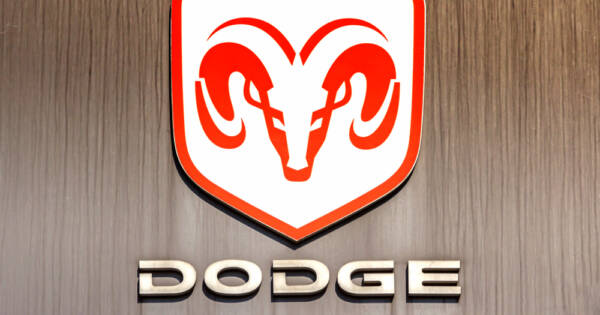Purchasing a used car provides many people the opportunity to get a new-to-them vehicle within their budget. Whether buying from a dealership or a private-party seller, you want to get the best possible deal. Thankfully, the prices of used vehicles are never set in stone. It’s possible to negotiate the asking price if you know what you’re doing. Understand the factors at play when determining how far you can negotiate the price.
Narrow Down Your Options
Once you begin looking for a used vehicle, you’ll quickly notice there are dozens (if not hundreds) of options available. Most of these vehicles can be found online, although you might find some on the side of the road or when visiting a used car dealership in person. The sheer number of options can quickly feel overwhelming.
Before looking at individual vehicles, narrow down your options by deciding what you want. For example, do you want a pickup truck, minivan, car or SUV? Do you want a vehicle manufactured in the last ten years or with less than a certain number of miles?
Research Average Purchase Price
If you want to get a good deal, you must first know what it looks like. Once you’ve found a vehicle that fits your criteria, study the average purchase price of similar vehicles in your area. Kelly Blue Book is an excellent resource for this.
If you’re looking at a vehicle priced significantly above the average purchase price, it’s best to find a different option. However, you’ll also want to be wary of deals that seem too good to be true. For example, if similar vehicles sell for around $10,000, but you find one for $2,000, there’s likely something wrong with it.
Using the same $10,000 example, you should consider vehicles priced between $7,000 and $12,000. Remember, you plan to negotiate, so the asking price should be viewed as the maximum amount you’ll pay.
Check the Carfax Report
A Carfax report can give you many crucial details for any used car you hope to purchase. The report includes any accidents the vehicle was involved in and how many previous owners there have been. Additionally, you’ll be given an estimate of what the car is worth.
To get a report on a used vehicle, you’ll either need the vehicle identification number (VIN) or the license plate and state where it was registered. If you’re looking at cars online, you may not have this information on hand. However, you can ask the seller or find it when you look at the car in person.
Look at the Car in Person
Never agree to purchase a vehicle without seeing it in person. Images and written descriptions online can be deceiving. The only way to ensure accurate information on the vehicle’s condition is to take it for a test drive.
During the test drive, you’ll want to listen and feel for anything that seems off. For example, the vehicle should smoothly transition from one gear to another, and there shouldn’t be any strange noises. Always be sure to test the brakes too.
Check These Things Before Starting Negotiations
A test drive isn’t the only thing you should do. Before starting negotiations, you’ll want to inspect the vehicle manually. Start by checking for visible signs of rust. Be sure to check underneath the car too, as a lot of rust could be hiding in the vehicle’s undercarriage. You’ll want to look at the tires to ensure they’re holding air and have adequate tread.
Ask the seller to open the vehicle’s hood. You don’t need to be a car expert for this. Scan the engine for any signs of rust or apparent damage. While it’s normal for the engine to look a little dirty, it should be in overall good shape. Then, pull out the oil dipstick. If the oil is sludgy, thick or way below what it’s supposed to be, you don’t want the vehicle.
Know When To Walk Away
One of the most critical parts of the negotiation process is knowing when to walk away. There are several situations where this is the best option. A few examples include:
- The seller isn’t willing to negotiate the price at all.
- The vehicle is significantly overpriced (or underpriced, for that matter).
- You notice issues with the vehicle that the seller didn’t previously mention.
- The seller is trying to bully you into making a purchase.
You should always listen to your gut. If something feels off, trust that sensation and continue your used vehicle search elsewhere.
When Buying From a Dealership
Used car dealerships are one option for purchasing your next vehicle. There are a few benefits to buying from a dealership instead of a private-party seller.
A dealership could allow you to purchase something a little newer and a little more expensive thanks to a car loan. Additionally, these used cars may come with warranties, be cleaner and have been checked by a mechanic before sale. However, this route also requires special negotiation considerations.
Get Pre-approved
If you’re planning on getting an auto loan for your used vehicle purchase, you can still negotiate the price of any vehicle on the lot. However, you want to get pre-approved for an auto loan instead of waiting until you arrive at the dealership.
Getting pre-approved lets you know how much you can afford. But, it also stops you from overspending. Many used car dealerships will try to negotiate a price based on monthly payments instead of the total purchase price. In these situations, it’s easy to accidentally overpay for your used car.
Always Read The Contract In Detail
The salesperson will draw up a contract once you’ve discussed the purchase terms (including negotiating a price). Don’t sign off on this contract believing it says what you think it does. Instead, read every page to verify the information.
Key information to look for in the contract includes the total purchase price and monthly payments. If you’re supposed to have a warranty, verify the contract states this. Also, check what the warranty covers. Look for hidden fees and late-payment information.
When Buying From a Private-Party Seller
Purchasing a used car from a private-party seller is the alternative to buying from a dealership. Although you can’t buy these vehicles using an auto loan, there are a few benefits to choosing a private-party seller.
Paying cash for a used vehicle means there will be no monthly payments and no risk of repossession if you run into money issues in the future. Additionally, you can usually negotiate private-party sellers down further than a used car dealership. However, there are a few special negotiation considerations if choosing this route.
Come With Cash in Hand
If you’ve done your homework and are relatively sure a particular vehicle is for you, come with cash in hand. Many private-party sellers are willing to further reduce their price for cash at the moment of negotiations.
However, you’ll still want to visually inspect the vehicle and take a test drive. You also don’t want to let the private-party seller know exactly how much cash you brought. If the seller knows how much money you have on hand, they will try to negotiate as close to that amount as possible.
Bring Your Evidence
If necessary, a used car dealership can usually pull up certain essential information, like the Carfax report or Kelly Blue Book value. But a private-party seller can’t. That’s why you should bring this information with you when you look at a used car.
Often, private-party sellers aren’t sure what their vehicles are worth. As a result, they may be willing to negotiate a lower price if your evidence shows they’re asking too much for their used car.




